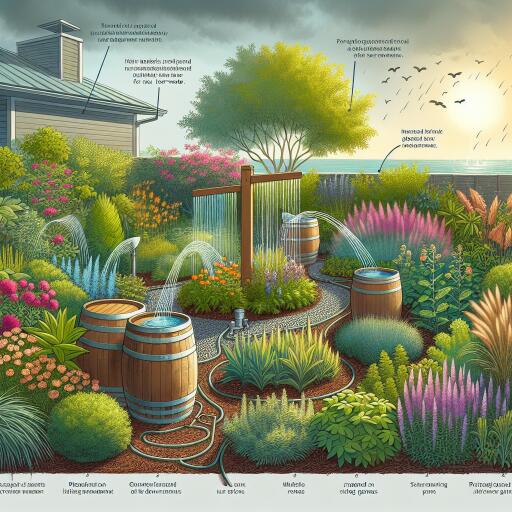
What Is A Landscaping Method That Utilizes Water Conserving Techniques? – Green Packs
In the face of increasing water scarcity and climate change, homeowners and garden enthusiasts are turning towards more sustainable landscaping options. One effective approach that embraces water conservation is xeriscaping. This innovative method minimizes the need for water through careful planning and the selection of drought-resistant plants, offering an eco-friendly solution for creating verdant outdoor spaces in arid environments.
Understanding Xeriscaping
Xeriscaping is not just about reducing water usage; it’s a comprehensive approach to landscaping that combines aesthetics with efficiency. By adhering to several key principles, including thoughtful design, soil enhancement, water-efficient irrigation, and the selection of native vegetation, xeriscaping can drastically cut down on water consumption while maintaining the beauty of your garden.
This landscaping strategy encompasses the selection of plants that are native to the area or are particularly drought-tolerant, such as succulents, lavender, and yucca. These species are adept at thriving in dry conditions and, once established, require little to no supplemental watering. Additionally, xeriscaping promotes practices like mulching and the use of efficient irrigation methods like drip systems, which direct water to where it’s most needed, reducing waste and evaporation.
Benefits Beyond Water Savings
The advantages of xeriscaping extend beyond conserving water. Homeowners can enjoy lower utility bills, decreased maintenance needs, and a positive impact on the local ecosystem. The use of native plants supports the area’s biodiversity, providing habitat and food sources for local wildlife and pollinators. Furthermore, xeriscaping requires fewer chemical inputs, such as fertilizers and pesticides, decreasing the potential for harmful runoff.
Practical Steps for Xeriscaping
To embark on xeriscaping, start with a design that considers the land’s layout and your area’s specific climate. Improving soil quality is also crucial; adding organic matter can enhance its water retention and nutrient content. Grouping plants with similar water needs together and incorporating elements like rock gardens or gravel paths can create visually striking features that require no watering at all.
Mulching plays a vital role in retaining soil moisture, controlling weeds, and maintaining an even soil temperature, benefits that are essential for a thriving xeriscape. Regular maintenance, although less demanding than traditional landscaping, is still necessary to ensure the health of your garden. Monitoring irrigation systems, pruning, and weeding will keep your xeriscape looking its best.
A Sustainable Choice for the Future
With water scarcity becoming a pressing issue worldwide, xeriscaping offers a forward-thinking solution for homeowners looking to reduce their environmental footprint and adapt to changing climate conditions. By employing strategic design and water-saving techniques, xeriscaping can create resilient, self-sustaining outdoor spaces that conserve water and support local ecosystems.
While the initial setup of a xeriscape might require investing time and resources, the long-term benefits—both financial and environmental—make it an increasingly popular choice among eco-conscious gardeners. As we face the challenges of water conservation and sustainable land management, xeriscaping stands out as a practical, effective way to beautify our homes and protect our planet.





Leave a Reply